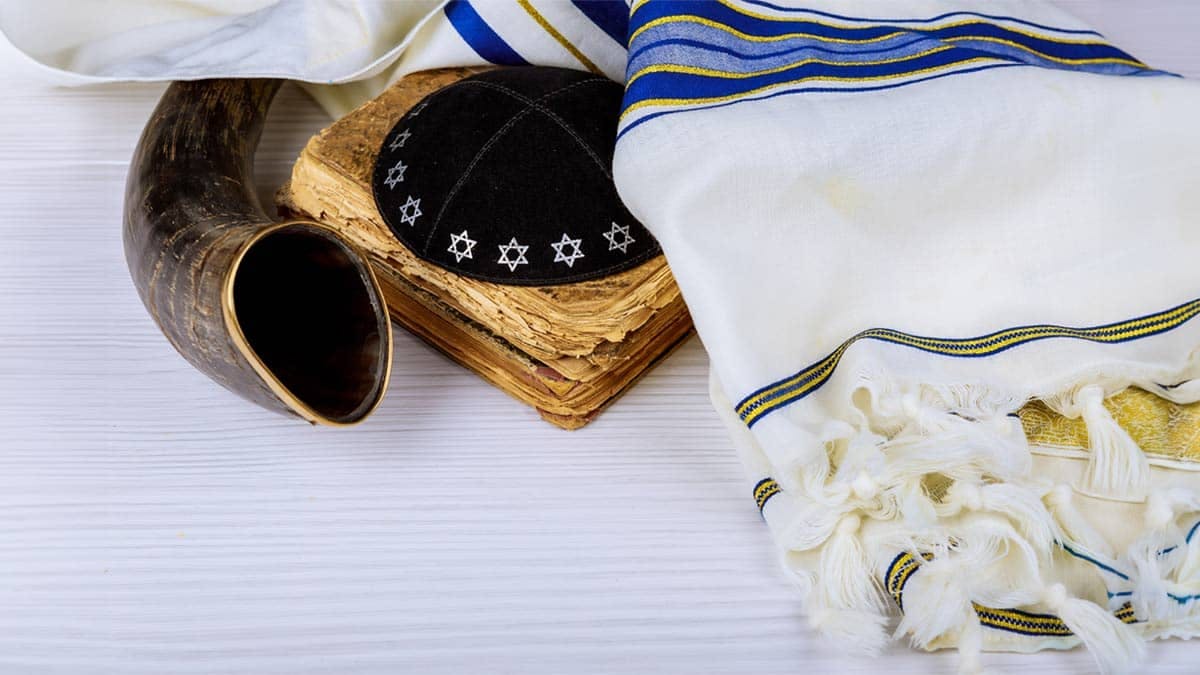
What Do These Jewish Holidays Say About Your Faith in Jesus?
The Feast of Trumpets or Jewish New Year (Rosh Hashanah) (Leviticus 23:23–25)
In the Old Testament
In the seventh month of the Jewish calendar, on the first of Tishri, is Yom Teruah (the Feast—literally, “day”—of Trumpets). Today it is better known as Rosh Hashanah, the Jewish New Year. There seem to have been several new years in Old Testament times, just as today there are academic, fiscal, and calendrical new years. While Passover marked one kind of new year (Exodus 12:1–2), Rosh Hashanah marks another. The biblical significance of Yom Teruah is found in the cry of the shofar, a ram’s horn or trumpet, which called the people to stop what they were doing and consider their lives. A ten-day period of self-reflection, now called Yamim Nora’im, or the Days of Awe, followed the Feast of Trumpets.
In the New Testament
While not specifically mentioned, we can note a parallel between the Feast of Trumpets and the ministry of John the Baptist, who called the people to repentance.
In Jewish Life
Rosh Hashanah, though leading up to the solemnity of Yom Kippur, has become a joyful day. Special greetings and sweet foods like apples dipped in honey are a way to wish one another a healthy and happy new year ahead. In the synagogue, the story of Abraham’s near-sacrifice of Isaac is read.
The Day of Atonement (Yom Kippur) (Leviticus 23:26–32)
In the Old Testament
The Days of Awe (see above) ended at the most solemn day on the biblical calendar—Yom Kippur, the Day of Atonement. On this day alone, the High Priest entered the Holy of Holies, with blood, and made atonement for himself, his family, and the nation. His reemergence alive from behind the veil signified the good news that his sacrifice had been deemed a sufficient and acceptable atonement for sin.
In the New Testament
Yom Kippur offers a portrait of the Messiah Jesus’s death and resurrection. He offered his life as the complete and final atonement for sins. His resurrection from the dead—his reemergence alive—signified the good news that his sacrifice had been deemed sufficient and acceptable as the one-time payment for sin. In describing this, the book of Hebrews speaks of Yom Kippur as it took place in the days of the Tabernacle in order to point to Jesus’s final sacrifice and priestly ministry on our behalf. In Acts 27:9, the verse literally says that “the fast was now already gone by.” Here “the fast” refers to Yom Kippur (which involved fasting) and the increased danger of seagoing voyages after that holiday.
In Jewish Life
Yom Kippur is a day of fasting, based on the traditional understanding of “deny yourselves” in Leviticus 16:29. The book of Jonah with its theme of repentance is read in synagogues on this day.
The Feast of Tabernacles or Shelters (Sukkot) (Leviticus 23:33–43)
In the Old Testament
Five days after Yom Kippur, on the fifteenth of Tishri, Israel was called to celebrate this final holiday in the biblical calendar. The Hebrew name is Sukkot, meaning tabernacles, booths, or shelters. God decreed that for seven days the people must live in booths in order to remember when they dwelt in temporary structures during the forty years of wandering in the wilderness. They stood as a testimony of the grace of the Lord who sheltered the people throughout those years of wandering. They also stood as a sober reminder of the reason for the wanderings—unbelief. Sukkot also commemorated the final harvest festival of the year. During the week-long commemoration, people gathered foliage (“branches from magnificent trees—palm fronds, boughs from leafy trees, and willows that grow by the streams” Leviticus 23:40) and rejoiced over the harvest that God had provided. Zechariah 14:16 portrays a requirement that all believers celebrate Sukkot at the end of the age.
In the New Testament
Perhaps it was this understanding of Sukkot as a harbinger of the final harvest that provoked Peter’s words when he saw Jesus flanked by Moses and Elijah and clothed in his final kingdom glory at the transfiguration. He exclaimed, “Rabbi, it’s wonderful for us to be here! Let’s make three shelters …” (Mark 9:5). Perhaps, thinking that in this brief vision of glory the Kingdom was about to appear in all its fullness, he was attempting to carry out the mandate of Zechariah 14:16.
In Jewish Life
Jewish people continue to “live in shelters” during this holiday. The shelter or booth is called a sukkah, and is an unsubstantial three-sided edifice decorated with thatching, fruits, and plants. Other elements of the holiday are the lulav (the plants of Leviticus 23:40, thought to be palm branches, myrtle leaves, and willow leaves) and a citron called the etrog.
We are excited to partner with Tyndale to produce a Messianic version of their wonderful Chronological Life Application Study Bible. In addition to adding a Messianic Jewish perspective to many of the study and application notes, we contributed articles and charts such as this one. Pre-order your copy here.